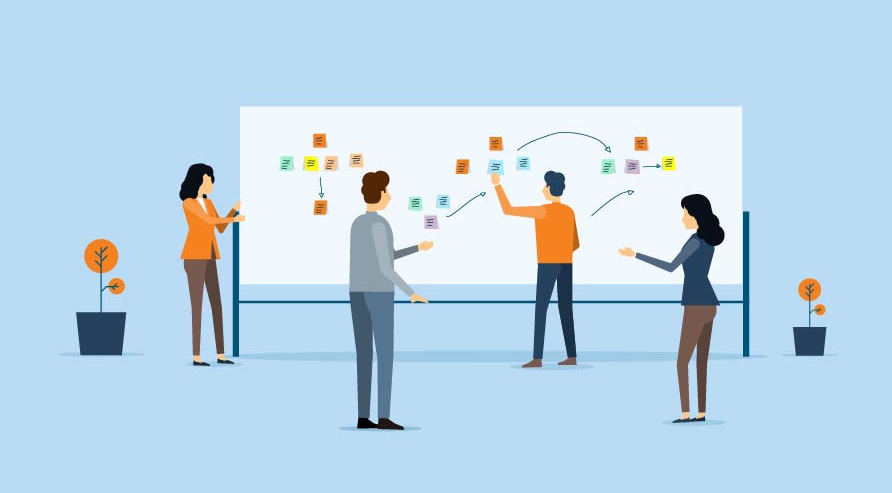How to Get the Most Out of Your Customer Experience Center
Everyone wants to get closer to their customer.
In fact, rumor has it consulting firms get paid good money to bring back the voice of the customer to clients!
B2C companies have many options for gathering vast amounts of market data from decision-making individuals, gleaning consumer insight from surveys, shop-alongs, and social media analysis. B2B companies, on the other hand, have significantly fewer opportunities to interact with their customers, and many leading innovators have turned to customer experience centers as a solution.
Customer experience centers can be thought of like the theater – in order to create a successful and engaging experience, you need investors and producers, careful thought and attention given to the right set, meaningful props, and an effective cast and crew.
Done properly, they allow B2B companies to not just pitch to a customer, but to tell the story of their unique culture and capabilities, engaging with customers at a level that results in the elicitation of new thoughts, new possibilities, and ultimately, new business opportunities.
For anyone contemplating the creation of a customer experience center, or wishing to improve their existing facility, there are a number of common worrisome questions. What best practices maximize the customer experience? What makes a customer experience an experience and not just another meeting? Why invest in these experiences and centers versus other approaches to customer engagement? What measures can be used to evaluate achievements? And finally, what gets in the way of success?
Newry visited 20 customer experience centers across the U.S. and Europe, spanning a variety of industries, and identified five best practices used by some of the highest-performing innovators in the world.
1. Don’t lose sight of the purpose of customer experience initiatives: to get close and stay close to the customer
Every center we visited was a bit different, but the best ones were very deliberate in designing various experiences with the customer in mind. Before they designed their center and the optimal experience, they asked themselves: Who are my customers (or possibly, who is my optimal customer)? What do we need to show them so they understand our value prop? What’s going to “wow” them?
These experiences need to be delivered by the right “cast,” or guides. Great center guides are gifted at elicitation, knowing when to make the conversation broad or when to focus in on narrower technical issues. They must be able to not only understand customer problems, but also to make the connection between the problem and the company’s capabilities, and to engage the right internal experts to drive the conversation forward. As one experience center manager put it: “Customers don’t know what they don’t know, which makes our role all the more important.”

The most effective centers and guides can successfully establish intimacy with all customers – large and small, new and repeat. This closeness is facilitated by careful preparation for customers’ visits, ranging from carefully documented intake processes to classes providing common language for more technical topics.
2. Make customer experience an integral element of corporate strategy—and fund and locate centers appropriately to ensure strategic alignment
Money makes the world go around, and a clear reporting and funding structure can make or break the success of a center by providing clear strategic direction and access to the right resources. Innovation leaders accomplish this objective in a variety of ways, including (but not limited to):
- Creating a center INSIDE a plant, with ready access to technical experts who can address your customers’ complex technical issues
- Locating the center in strategically important, high-growth geographies
- Designing a center that addresses the initiatives of high-priority markets.
Whichever approach you choose, ensure that your customer experience center reflects your strategic initiatives and is funded to provide for the resources needed to execute.
3. Be open to new business models and various forms of investment in customer experience, from joint ventures to partnerships and other forms of collaboration

The most vivid example of this principle came from a specialty chemicals company. The company realized the best conversations took place when a customer’s designers understood a material’s performance and its impact on design options (not when purchasing dictated the conversation). As more of their customers brought their in-house designers into the process, the company decided to build their own design staff in order to facilitate more effective conversations, accelerate innovation, and speed product adoption.
4. Use customer experiences to tell your story, using the full range of tools to engage the customer and build a strong connection
As we alluded to earlier, the experience is more than a conversation. It’s interactive, it’s engaging, it’s based on elicitation and a certain amount of EQ. In an upcoming blog, we’ll focus on the elements of storytelling, from your script, set and props, to your cast.

5. Find ways to measure the impact of customer experience outcomes on business results – using a blend of quantitative and qualitative measures
The greatest problem we heard centered on how best to describe success. What is the right set of metrics for leadership to evaluate the return on investment of a customer experience center? What is the best way to ensure continued funding and widespread organizational support? In our final blog, we’ll expand on the very critical question of how success should be defined for Customer Experience Centers.
Find out how Newry can help your organization move smarter to move faster. Get traction in your market.
